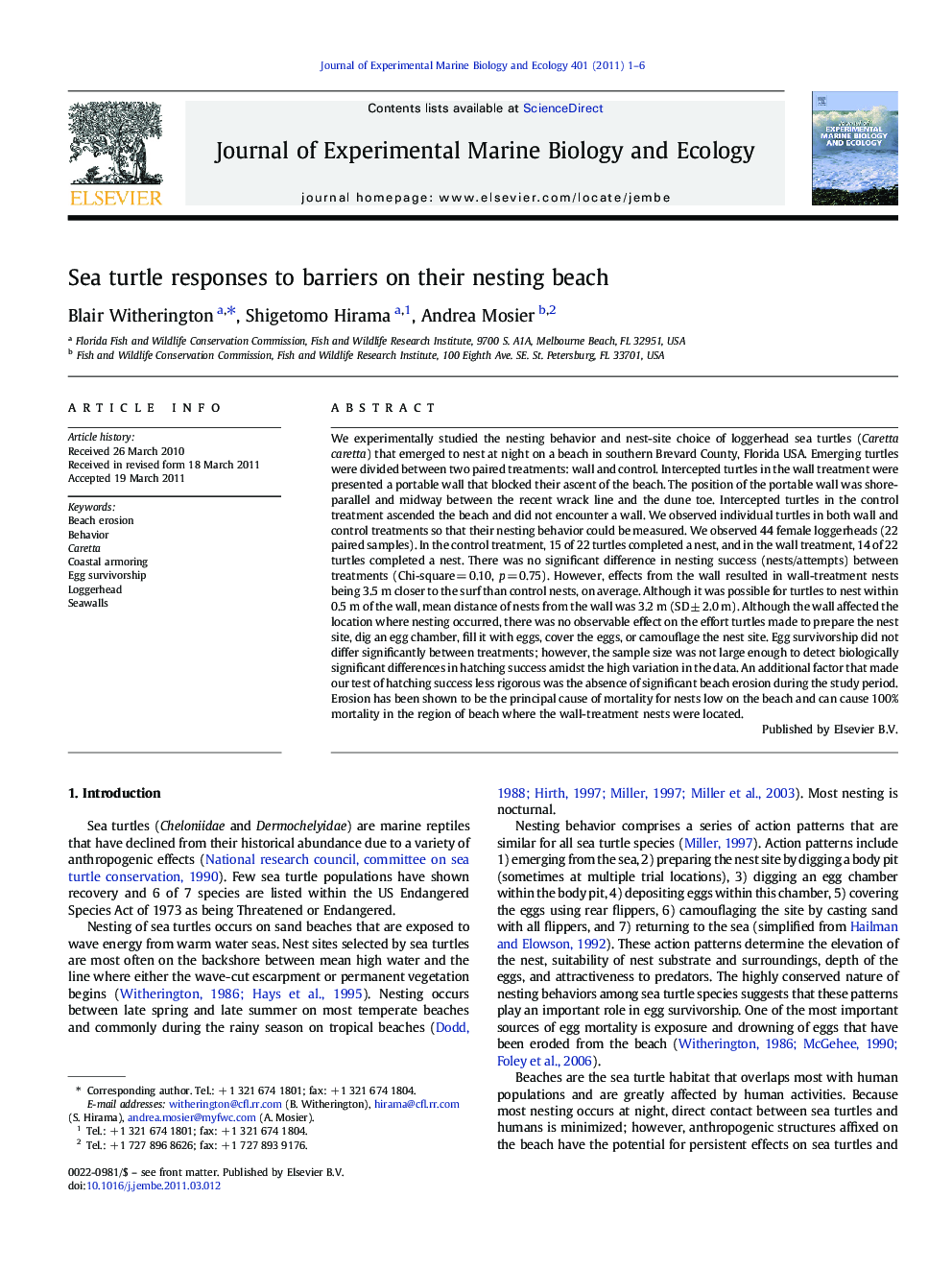| Article ID | Journal | Published Year | Pages | File Type |
|---|---|---|---|---|
| 4396308 | Journal of Experimental Marine Biology and Ecology | 2011 | 6 Pages |
We experimentally studied the nesting behavior and nest-site choice of loggerhead sea turtles (Caretta caretta) that emerged to nest at night on a beach in southern Brevard County, Florida USA. Emerging turtles were divided between two paired treatments: wall and control. Intercepted turtles in the wall treatment were presented a portable wall that blocked their ascent of the beach. The position of the portable wall was shore-parallel and midway between the recent wrack line and the dune toe. Intercepted turtles in the control treatment ascended the beach and did not encounter a wall. We observed individual turtles in both wall and control treatments so that their nesting behavior could be measured. We observed 44 female loggerheads (22 paired samples). In the control treatment, 15 of 22 turtles completed a nest, and in the wall treatment, 14 of 22 turtles completed a nest. There was no significant difference in nesting success (nests/attempts) between treatments (Chi-square = 0.10, p = 0.75). However, effects from the wall resulted in wall-treatment nests being 3.5 m closer to the surf than control nests, on average. Although it was possible for turtles to nest within 0.5 m of the wall, mean distance of nests from the wall was 3.2 m (SD ± 2.0 m). Although the wall affected the location where nesting occurred, there was no observable effect on the effort turtles made to prepare the nest site, dig an egg chamber, fill it with eggs, cover the eggs, or camouflage the nest site. Egg survivorship did not differ significantly between treatments; however, the sample size was not large enough to detect biologically significant differences in hatching success amidst the high variation in the data. An additional factor that made our test of hatching success less rigorous was the absence of significant beach erosion during the study period. Erosion has been shown to be the principal cause of mortality for nests low on the beach and can cause 100% mortality in the region of beach where the wall-treatment nests were located.
Research highlights► We studied nesting of sea turtles presented a portable wall that blocked beach ascent. ► The wall caused nests to be closer to the surf than expected from a simple barrier. ► Nesting turtles likely responded to visual stimuli from the wall. ► Erosion can cause extensive mortality in nests near the surf.
